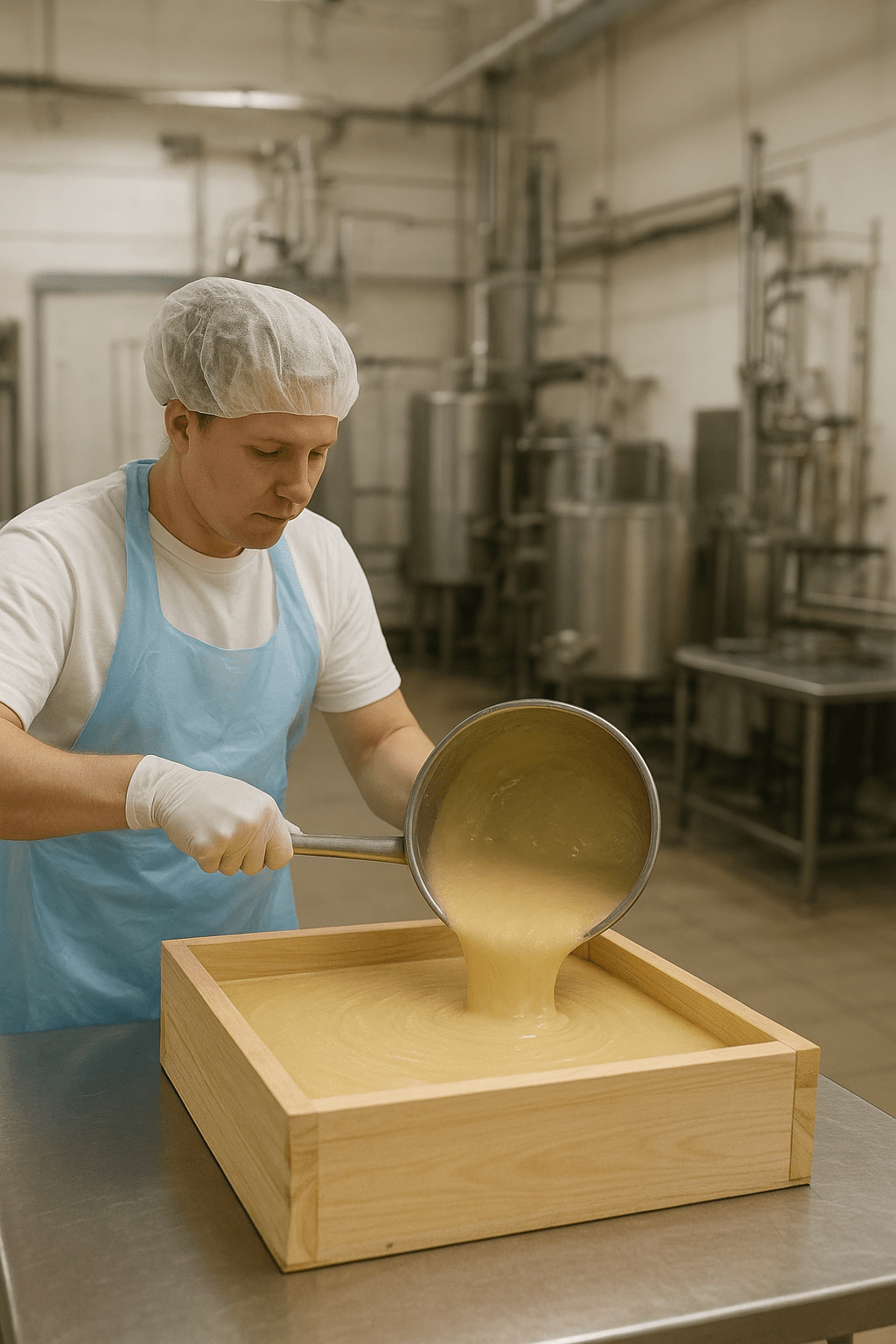Introduction
Soap is one of the most essential products in our daily lives, used for personal hygiene, skincare, and household cleaning. But have you ever wondered how quality soap is made inside a professional soap factory? Modern soap production combines traditional craftsmanship with advanced technology to deliver safe, effective, and sustainable products. In this article, we will take you inside a soap factory and explain the step-by-step soap manufacturing process, highlighting the quality control measures that ensure every bar meets international standards.
Step 1: Selection of Raw Materials
The foundation of quality soap begins with high-grade raw materials. Soap factories carefully choose natural oils and fats such as coconut oil, palm oil, and olive oil. These oils are rich in fatty acids, which are essential for soap formation and skin nourishment. Additionally, lye (sodium hydroxide or potassium hydroxide) is used as the alkali to trigger the saponification process. Factories often source eco-friendly and sustainable ingredients to meet the growing demand for natural and organic soap.
Step 2: Saponification Process
The heart of soap making is saponification—a chemical reaction between oils and alkali. In a soap factory, this step is carefully monitored using large stainless-steel mixing tanks. The oils and lye are combined at controlled temperatures, ensuring the reaction produces a smooth, consistent soap base. Depending on the formula, additional ingredients like shea butter, essential oils, or natural clays are added at this stage to enhance moisturizing properties, fragrance, and cleansing effectiveness.
Step 3: Refining and Mixing
Once the initial soap base is created, it undergoes a refining process. The mixture is passed through a series of rollers and mixers to improve texture and eliminate air pockets. This step ensures that the soap has a uniform composition and smooth finish. Soap factories may also blend in exfoliating agents like oatmeal, activated charcoal, or botanical extracts during this stage.
Step 4: Adding Fragrance and Colors
Fragrance and color are what make soap more appealing to consumers. In a professional soap factory, only safe and approved cosmetic-grade fragrances and pigments are used. Essential oils are often chosen for their natural aroma and therapeutic benefits, while plant-based dyes provide eco-friendly coloring options. The goal is to create a soap that not only cleans but also provides a pleasant sensory experience.
Step 5: Molding and Cutting
After mixing, the soap mass is poured into large molds or pressed into shapes using automated machinery. Once solidified, the soap is carefully cut into bars or other custom shapes depending on the brand’s design. Soap factories invest in precision cutting equipment to ensure uniform sizes and weights, which is crucial for consistent quality in mass production.
Step 6: Drying and Curing
Before packaging, the soap bars go through a drying and curing process. This stage allows excess moisture to evaporate, resulting in a harder, longer-lasting bar. Traditional soap can take weeks to cure, but modern factories often use drying chambers that speed up the process while maintaining quality. Proper curing ensures the soap has a stable pH level, making it gentle and safe for the skin.
Step 7: Quality Control and Testing
Quality assurance is a critical step in soap manufacturing. Every batch of soap is tested for pH balance, hardness, lather quality, and safety compliance. Factories follow Good Manufacturing Practices (GMP) to meet international cosmetic standards. Only soap that passes these rigorous tests moves forward to the packaging stage.
Step 8: Packaging and Labeling
The final step is packaging, which not only protects the soap but also communicates the brand’s identity. Factories use eco-friendly packaging materials, such as recyclable paper wraps or biodegradable boxes, to reduce environmental impact. Each package includes labeling with ingredient lists, safety information, and certifications (such as organic or cruelty-free).
Why Soap Factory Standards Matter
High-quality soap production requires more than just ingredients—it demands precision, hygiene, and consistency. By following these step-by-step processes, soap factories can create products that are safe, effective, and tailored to customer needs. Whether producing luxury artisanal bars or large-scale commercial soap, maintaining strict quality control ensures that consumers receive a product they can trust.
Conclusion
The journey of soap from raw materials to a finished bar is both scientific and artistic. Inside a soap factory, advanced equipment works hand-in-hand with skilled technicians to deliver products that meet the highest standards of safety and performance. By understanding the soap manufacturing process, consumers gain a deeper appreciation of the craftsmanship behind every bar of soap.
If you’re a brand, retailer, or distributor looking to partner with a reliable soap factory, choosing a manufacturer that prioritizes quality, sustainability, and innovation is key to success in today’s competitive market.

